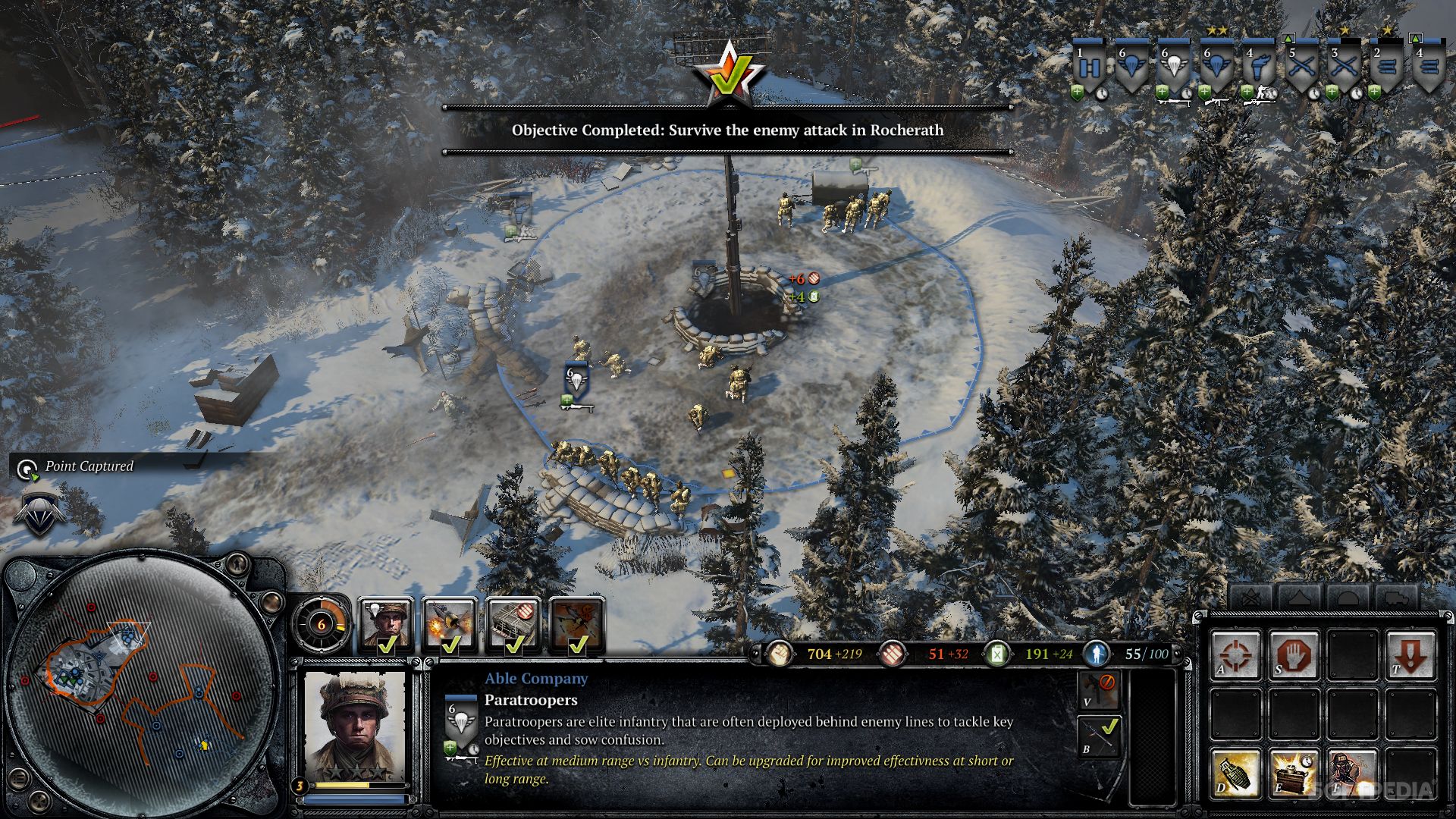

Well, that and the fact that every squad I lost brought me one step closer to outright losing the campaign. While any of my commanders would wax melancholic about missions in which we took too many casualties, it was Vastano’s almost unhinged, cuss-spattered rants that made me feel the worst. Thrust into command after the death of his superior, he isn’t exactly what I would call “management material.” Leading the Airborne, notable for their ability to drop behind enemy lines and call in heavy air support, he has a very, “War sucks, what am I doing here?” outlook on our situation. They quickly became my favorite company, able to quickly deploy a lot of versatile firepower anywhere on the map, and capture multiple control points before the enemy could react.

Bill Edwards is a third-generation soldier with equal doses of optimism and idealism, leading the extremely mobile and aggressive Mechanized Infantry. Making smart use of assault engineers and fixed emplacements, Derby’s boys were my go-to workhorses for any mission where I just needed to hold the damn line. Kurt Derby of the Support Company is a veteran of the first World War who continuously laments the plight of the “kids” under his command.

Each has its own interesting units and abilities, and a voiced commander with context-sensitive dialogue and a unique personality and backstory that helps make them feel like real people I didn’t want to get killed. My left, right, and… other left hands in this endeavour are three persistent companies that can move, engage enemies, take casualties, and be upgraded independently. Taking a cue from some of Relic’s best single-player experiences in the Warhammer 40K: Dawn of War franchise, this stand-alone expansion features an open-ended campaign map on which I was charged with pushing the Third Reich out of the greater Belgium area.


 0 kommentar(er)
0 kommentar(er)
